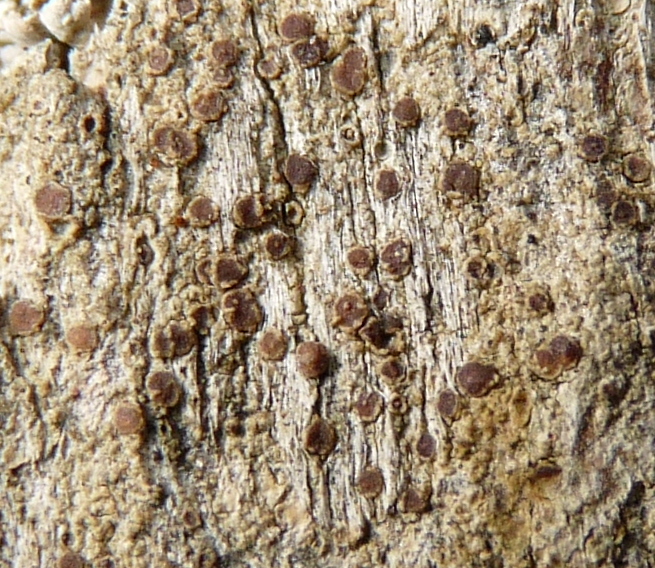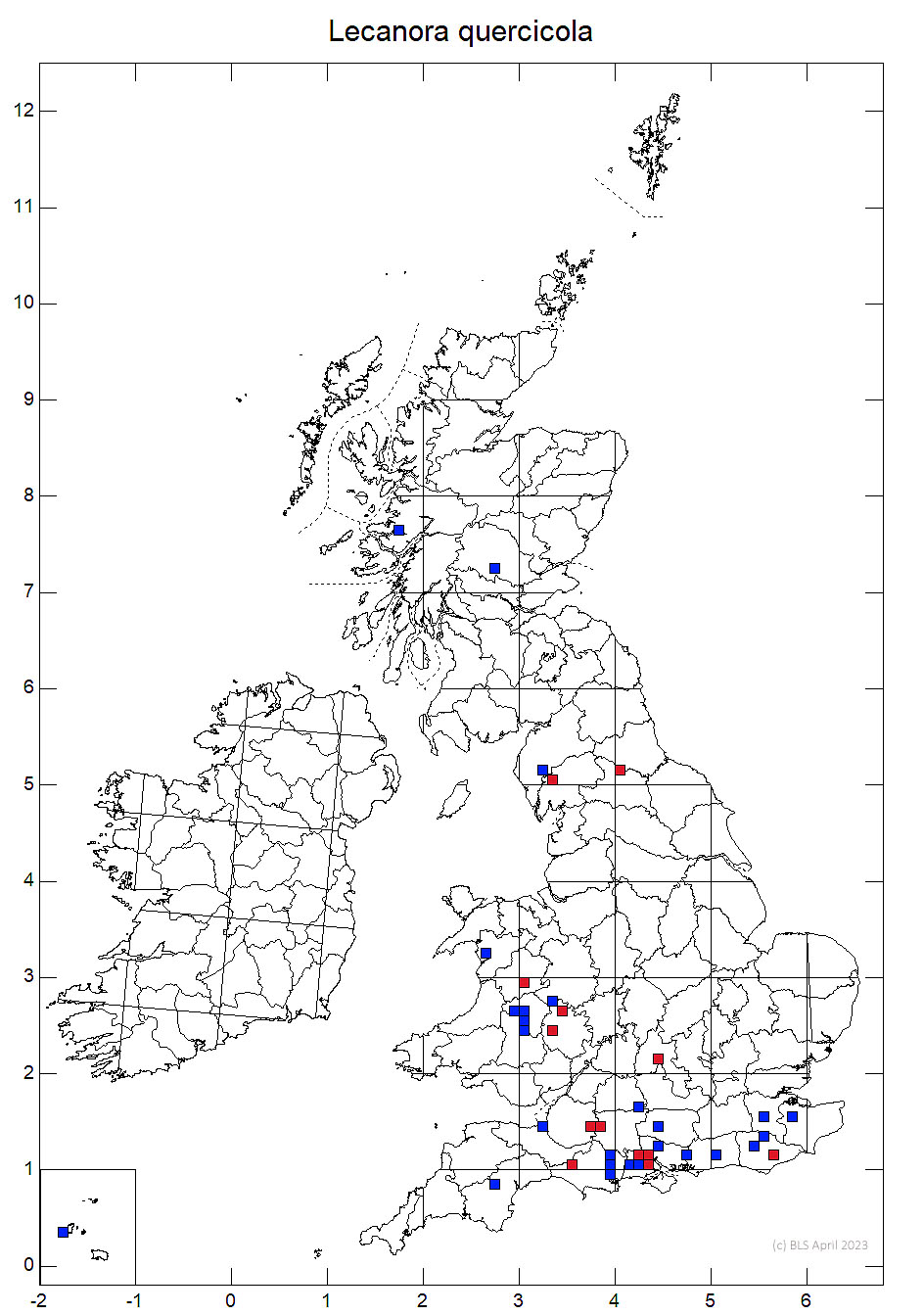This species superficially does not look all that different from a small Lecanora chlarotera except that it occurs on the old bark of ancient trees whilst L. chlarotera is typically a species of young smooth bark. The often pruinose, red-brown coloured lecanorine apothecia on a grey thallus are all Pd- and K- (unlike L. chlarotera that has a K+ yellow thallus). The conidia need to be observed to separate it from other small Lecanora species.L. quercicola has sickle-shaped conidiospores over 1.5 microns wide and between 8 and 12 microns long. (RGW)

Photo: Ray Woods
It occurs on the dry rough bark of veteran deciduous trees in open woodland, parkland and in wayside hedges. In Wales it has only ever been found on oak.
In Wales it is known from 7 sites, one in the Snowdonia National Park and the rest in Powys. Elsewhere it is a very local species with one record in Scotland from Ardnamurchan. In England it is known from 10 sites in the southern counties of Sussex, Hampshire, Dorset and Devon. Here it occurs in some of the finest ancient woodlands and parklands such as the New Forest, Melbury, Parham and Eridge Parks. Elsewhere it is confined to Western Europe. (RGW)
All populations appear to be very small-possibly occurring on only a single tree in each site. Of equal concern is that this lichen has not been seen in Wales for 25 years. Only two sites are afforded any form of statutory protection though none are known to be under any particular threat. The British population is considered to be of international importance. In Britain it is considered to of near threatened status whilst in Wales, due to its small population size, it is considered to be vulnerable. (RGW)
- Log in to post comments

